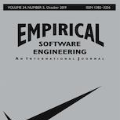Background: Construct validity concerns the use of indicators to measure a concept that is not directly measurable. Aim: This study intends to identify, categorize, assess and quantify discussions of threats to construct validity in empirical software engineering literature and use the findings to suggest ways to improve the reporting of construct validity issues. Method: We analyzed 83 articles that report human-centric experiments published in five top-tier software engineering journals from 2015 to 2019. The articles' text concerning threats to construct validity was divided into segments (the unit of analysis) based on predefined categories. The segments were then evaluated regarding whether they clearly discussed a threat and a construct. Results: Three-fifths of the segments were associated with topics not related to construct validity. Two-thirds of the articles discussed construct validity without using the definition of construct validity given in the article. The threats were clearly described in more than four-fifths of the segments, but the construct in question was clearly described in only two-thirds of the segments. The construct was unclear when the discussion was not related to construct validity but to other types of validity. Conclusions: The results show potential for improving the understanding of construct validity in software engineering. Recommendations addressing the identified weaknesses are given to improve the awareness and reporting of CV.
翻译:暂无翻译





